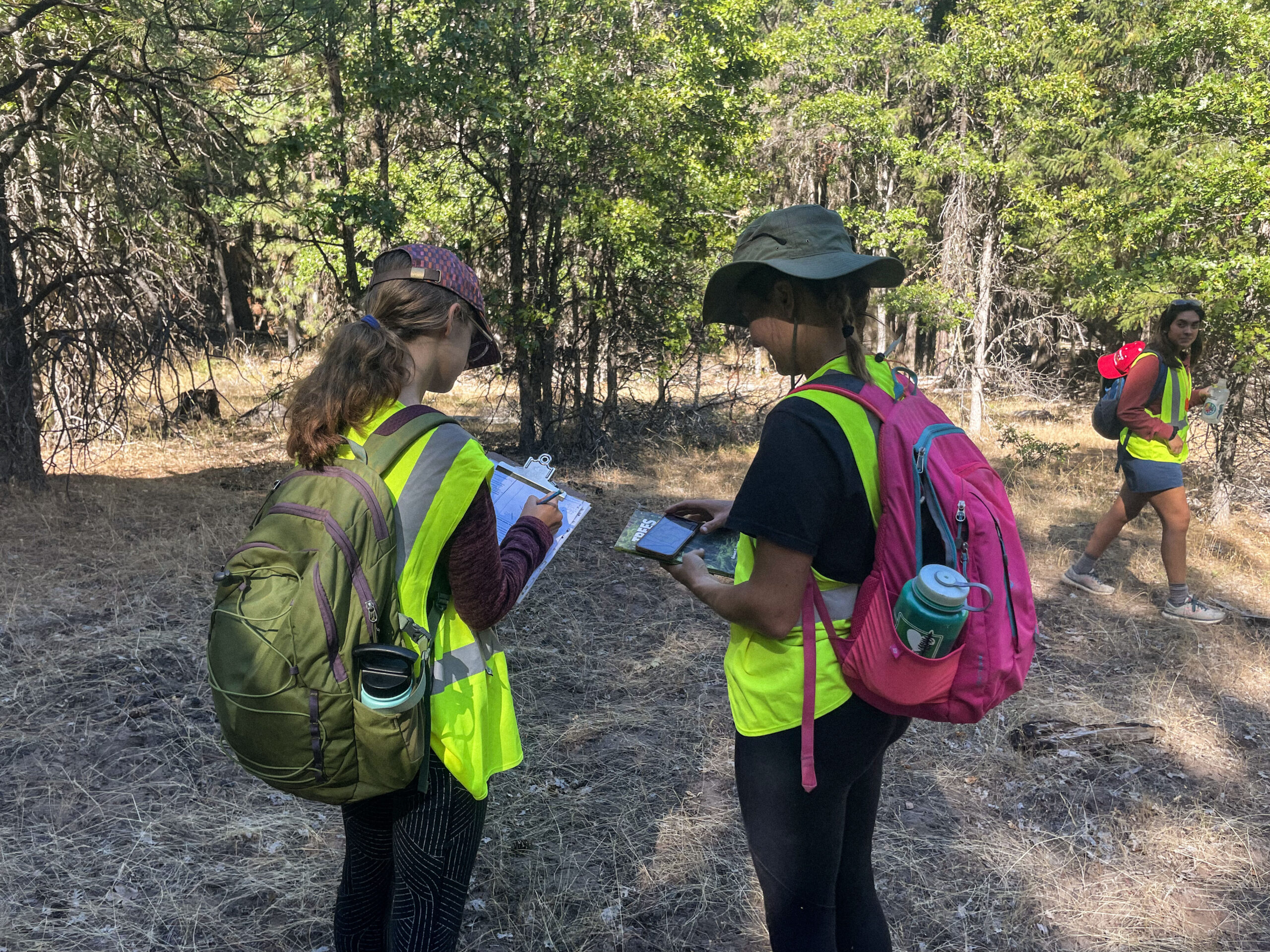Here's Bark’s recommended packing list for field days, plus a list of the equipment Bark provides. Please come prepared!
Field Day Must-Haves
1. Comfortable, weather-appropriate clothing & shoes.
- Long pants are REQUIRED.
- Long sleeves and pants are recommended regardless of the season, because they’ll protect you from the sun, bugs, and plant scratches!
- Hiking boots or shoes are recommended.
- For wetland and beaver field days, we recommend rubber boots. You can reserve these in the registration form. They are first come, first served. If you are concerned about getting the appropriate size, please email Meg@Bark-Out.org 24 hours ahead of time.
- Always bring a rain jacket, no matter the weather!
- Check out our detailed clothing considerations here.
2. Lunch, Snacks, & Water
- 2 liters of water is usually sufficient. If it’s hot, bring extra water and an electrolyte mix.
- Plan to eat lunch in the field, away from your vehicle.
- When in doubt, bring more food than you think you’ll need. High activity levels burn extra calories so extra snacks are always a good idea.
3. Regular medications
- If you have a history of severe allergic reactions (especially to stings or bites), please bring the appropriate medication and let someone in your group know how they can access it in case of an emergency. If you have an epi-pen, bring it!
- If you have asthma, please bring an inhaler.
- Any medical condition that may affect your field day, please come prepared and let the Bark staff know ahead of time.
- Bark staff are all trained by NOLS in Wilderness First Aid and EpiPen certified.
4. Vehicle safety items
- Bark avoids taking people places where vehicles are likely to get stuck or damaged. However, forest service roads are unpredictable and it’s always good to be prepared. Helpful items to bring include spare tires and jumper cables.
5. A notebook and pen
- Bring a notebook and pen to take notes, sketch, and write with during Bark’s Land Acknowledgement Practice
Need to borrow some gear?
Bark has lots of extra gear available to borrow, including:
- Warm hats
- Puffy jackets
- Some rain gear
- Wool socks
- Guidebooks
- Tools and gloves for active restoration events
Email ForestWatch@Bark-Out.org to borrow anything you may need.
What does Bark provide?
- Clipboards with a data sheets and writing utensils
- Compass
- Map (for the survey and for the larger area)
- Clinometers (for measuring slope)
- DBH or Tree diameter tape (for measuring the diameters of trees; groundtruthing days only)
- Binoculars (for measuring canopy cover and looking at birds!)
- First Aid Kit
- Whistle
- Walkie Talkies (for communicating with other groups while in the field)
- Plant Identification guidebooks
